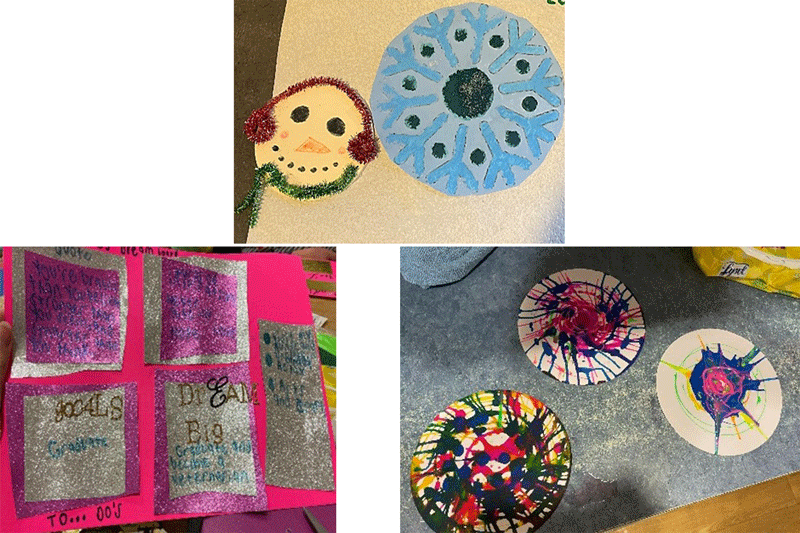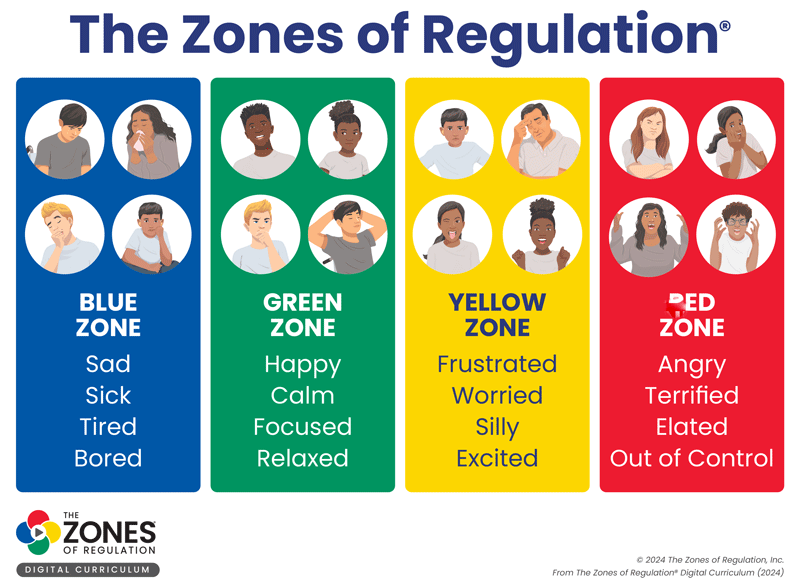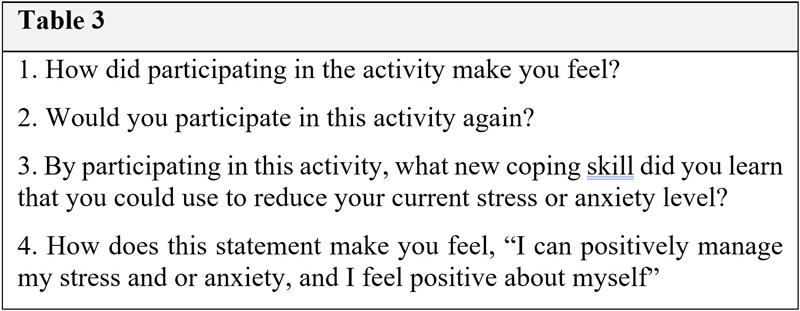Prader-Willi Syndrome (PWS) is a rare, complex genetic syndrome estimated to impact one in 10,000 to 30,000 individuals worldwide (National Library of Medicine [NLM], 2020). PWS is generated by a genetic mutation on Chromosome 15, causing a wide range of cognitive and physical disabilities (NLM, 2020). The following physical and cognitive dysfunctions can be seen in persons with PWS, mild to moderate cognitive impairments, learning disabilities, weak muscle tone or hypotonia, poor growth, delayed development, insatiable appetite, and behavioral challenges.

Latham Students completed leisure-based activities
Other key features of PWS include mild to repetitive compulsive behaviors, tantrums, irritability and negative mood, growth hormone dysfunction, hyperphagia, increased risks of morbid obesity, psychosis, and autism spectrum disorders (Dykens, 2014). In addition to the physical features of the condition, daily life functioning and the ability to be independent can be negatively impacted by PWS. The trauma population for purposes of this intervention was defined as individuals who have experienced or lived through physical abuse, emotional trauma, or psychological trauma. Both populations face challenges significantly greater than the typically developing child. Additional care and specialized programming are often needed to complete daily tasks and maintain emotional regulation. The specialized care these individuals need for daily functioning qualifies them for residential or group homes with specialized care staff, a facility much like Latham Centers in Brewster, Massachusetts.
Residential Care Facility and Leisure Engagement
Latham Centers is a direct-care residential facility housing children and adolescents who have experienced psychological, emotional, or physical abuse or children who have a PWS diagnosis. Latham’s mission is to “create opportunities for independence, self-worth, and happiness for children and adults with complex special needs” (Latham Centers, 2022). Latham is a world-renowned facility providing both populations with “innovative treatments and support services for intellectually disabled children and adults and for individuals living with Prader-Willi Syndrome (Latham Centers, 2022). Direct-care staff at Latham provide 24/7 care to both the PWS and the trauma population to increase both populations’ quality of life.
Among the interactive and comprehensive teams and services Latham can provide, there is still a need among students for engagement in leisure-time activities as defined as “nonobligatory activity that is intrinsically motivated and engaged in during discretionary time, that is, time not committed to obligatory occupations such as work, self-care, or sleep” (Occupational Therapy Practice Framework, 2020). The students at Latham sought additional leisure-based activities to enhance their mental health.
Literature – Leisure Activity Engagement and Mental Well-Being
Existing evidence highlights socially active leisure time is associated with a lower incidence of psychiatric disorders in general, and, specifically, with affective, anxiety, and substance use disorders by young adulthood (Alakokkare et al., 2021). The study suggests to prevent mental disorders, families, schools, and other communities should continue to enhance and develop community-based social leisure activities for children and adolescents (Alakokkare et al., 2021). This is specifically applicable to Latham, as anxiety is significantly increased and experienced daily by both populations. Existing literature additionally asserts engagement in activities outside of school can shape outcomes of related learning experiences and opportunities (Coll et al., 2021). It has also been found among individuals with PWS engagement in more physical activities and leisure activities contributes to advanced cognitive and adaptive skills (Dykens, 2012). Additionally, lack of engagement in activities such as TV watching; among children with PWS, TV viewing was correlated with increased skin picking and more frequent and severe compulsive-like behaviors.
Among the trauma population of youth who have experienced residential care, also termed care-experienced youth, benefit from leisure-time activities that are active or movement-based. A study examining care-experienced youth found children’s happiness and positive self-concept were related to engagement in active leisure activities (Coleman et al., 2009). Also found among youth who have experienced trauma, engagement in leisure activities increases confidence, competence, character, and connections (Sandford et al., 2019).
Methods
The implementation of leisure activities aimed to use existing evidence in the literature to facilitate engagement in meaningful leisure activities for both populations to further enhance mental well-being. The leisure activity intervention was provided in 2023 to Latham’s residential community, enabling access to students with PWS and trauma histories. All Latham students were included in the leisure activity intervention to further support mental well-being. The intervention groups contained up to eight students and consisted of both populations. The intervention groups were held for at least forty-five minutes once a week during residential hours. After each activity session, all students completed data outcome measures and answered qualitative questions. The data outcome measures were analyzed to track changes to the student’s overall mental well-being.
Leisure Activity Measures
All data collected was analyzed using a mixed methods approach to incorporate both qualitative and quantitative data. All qualitative data was collected through predetermined follow-up questions. Quantitative data was collected through the World Health Organization (WHO-5) Well-being Scale and The Zones of Regulation scale. The WHO-5 Well-being scale is a quantitative measure producing statistical data regarding mental well-being (Figure 1). The Zones of Regulation scale collected statistical data on the students’ ranges of emotions based on categories (Figure 2). These categories are known as zones, and each zone corresponds to a color (i.e., blue zone, red zone, yellow zone, and green zone). The analysis will show how students are being impacted by the intervention based on the zones reported. All quantitative data was analyzed using the Qualtrics statistical software program.

Figure 1

Figure 2
The qualitative data collected from the students was analyzed using a thematic analysis. This type of approach is being widely used within the social and health sciences (Braun & Clarke, 2014). This type of systematic analysis was used to analyze all qualitative data reported by the Latham students following the intervention sessions. At the end of all the intervention sessions, the students present were asked to answer a series of four follow-up questions (Table 3).

Table 3
Results and Conclusion
The 14-week leisure-based activity intervention outcomes contributed to improvements in Latham students’ emotional regulation, activity engagement, and overall mental well-being, as suggested in the existing literature. The present study indicated that Latham students’ engagement in weekly activities created peer connections and sustained students’ attention. At the start of the leisure activity intervention, 21% of Latham students were actively engaged and participating in leisure-based activities. On week 11, 65% of Latham students were engaged in leisure-based activities. By comparison, active participation in leisure activities increased by 44% from week 1 to week 12. Latham students’ engagement in activities increased weekly as the activities became a familiar part of residential programming. As students increasingly engaged, a sense of personal achievement was established, as suggested in previous studies, lessening initial anxiety previously impacting one’s decision to participate. Students who consistently completed the Zones of Regulation scale showcased significant improvements. Most notably, students who indicated they were in the green zone (happy, focused, calm, proud zone) increased from 63% to 83% by week 14. The 20% increase in students identifying as being in the green zone after activity completion is noteworthy as the targeted population has significant challenges with sustaining emotional regulation.
All students who consistently participated in leisure-based activities repeatedly responded positively when asked if they would participate again. Among students who were consistently actively engaged provided 90% positive verbal feedback in response to specific qualitative questions. Students frequently replied with statements such as this activity made me “feel good,” “happy,” and “calm.” Students additionally commonly replied with statements in reaction to the specific activities and interpreted them as “fun,” “enjoyable,” and “fun and relaxing.” Furthermore, the implementation of leisure-based activities positively influenced the mental well-being of all children and adolescents with Prader-Willi Syndrome and children with trauma.
Future Implications for Residential Facilities
The conclusions drawn from the residential facility at Latham Centers housing both trauma and PWS populations can have applications in a wide variety of residential and non-residential facilities. The common populations to which these results could be applied include Down Syndrome, Angelman Syndrome, Schaff-Yang Syndrome, Fragile X syndrome, and Williams Syndrome. The results can be further applied to pediatric or adolescent populations with diverse physical or cognitive disabilities. The overall result of increased mental well-being of both populations at Latham presents promising future results and implications for other residential or non-residential facilities serving similar populations.
Additionally, this intervention can support future healthcare professionals or care providers in maximizing health, well-being, and quality of life for children and adolescents with PWS, trauma, or similar diagnoses to support daily functioning and sustain positive mental well-being.
Acknowledgments
I express my sincere gratitude to the entire Latham community, especially the staff, the students, the board of directors, and the senior administration team for supporting this research. Participation by all contributed to the success of this research for the future benefit of children and adolescents in residential and non-residential settings seeking additional mental health programming. I sincerely thank Latham Centers and Johnson and Wales University’s Occupational Therapy Doctorate Program for permitting this research.
MaryClaire Attisano, OTD, BS, is a member of the Occupational Therapy Doctorate Program at Johnson and Wales University. She can be reached via email at J02279927@jwu.edu.
References
Ahmed, U., K., Chowdhury, & Faruk, Md., O. (2021). Assessing well-being of persons with disabilities: Validation of the WHO-5 well-being index. http://dx.dio.org/10.2139/ssrn.3882377
Alakokkare, A. A., Hakko, H., Niemela, M., Rasanen, S., & Timonen, J. (2021). Associations between adolescents’ social leisure activities and the onset of mental disorders in young adulthood. Journal of Youth and Adolescence, 50, 1757–1765. https://doi.org/10.1007/s10964-021-01462-8
Birkeland, S. M., Danielsen, G. A., Leversen, I., & Samdal, O. (2012). Basic psychological need satisfaction in leisure activities and adolescents’ life satisfaction. Journal of Youth and Adolescents, 41, 1588–1599. 10.1007/s10964-012-9776-5
Coleman, B., Holder, D., M., & Sehn, L. Z. (2009). The contribution of active and passive leisure to children’s well-being. Journal of Health Psychology,14(3), 378–386. 10.1177/1359105308101676
Dykens, M. E. (2012). Leisure activities in prader-willi syndrome: Implications for health, cognition and adaptive functioning. Journal of Autism and Developmental Disorders,44, 294-302. 10.1007/s10803-012-1462-7
Latham Centers. (July 19, 2016). Latham centers who we are. https://www.lathamcenters.org/
Latham Centers. (July 19, 2016). Mission. https://www.lathamcenters.org/
Quale, M. (2019). Effectiveness of components of the zones of regulation on student behaviors. National Institute of Mental Health. 00206BBAFEC8190827150019
The Zones Of Regulation. (2021). What are the zones of regulation https://www.zonesofregulation.com/learn-more-about-the-zones.html




